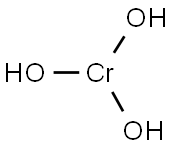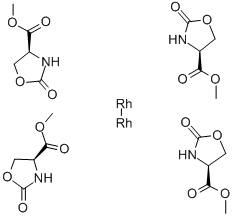Zinc hydroxide
- CAS NO.:20427-58-1
- Empirical Formula: H2O2Zn
- Molecular Weight: 99.39
- MDL number: MFCD00049620
- EINECS: 243-814-3
- SAFETY DATA SHEET (SDS)
- Update Date: 2025-12-17 09:49:53

What is Zinc hydroxide?
Chemical properties
Colorless crystals.Decomposes at 125C. Almost insoluble in water; forms both zinc salts and zincates.
Physical properties
Colorless orthorhombic crystals; density 3.053 g/cm3; decomposes at 125°C; slightly soluble in water.
The Uses of Zinc hydroxide
Intermediate, absorbent in surgical dressings, rubber compounding.
What are the applications of Application
Zinc Hydroxide is an amphoteric and naturally-occuring compound
Preparation
The compound is prepared by adding a strong alkali to a solution of zinc sulfate or chloride: ZnSO4 + 2NaOH → Zn(OH)2 + Na2SO4.
Properties of Zinc hydroxide
| Melting point: | 125, decomposes [HAW93] |
| Density | 3.050 |
| vapor pressure | 0Pa at 20℃ |
| form | colorless orthorhombic crystals |
| color | colorless orthorhombic crystals, crystalline |
| PH | 8.88(1 mM solution);8.88(10 mM solution);8.88(100 mM solution) |
| Water Solubility | slightly soluble H2O [HAW93] |
| Solubility Product Constant (Ksp) | pKsp: 16.5 |
| Stability: | Stable. |
| CAS DataBase Reference | 20427-58-1(CAS DataBase Reference) |
| EPA Substance Registry System | Zinc hydroxide (20427-58-1) |
Safety information for Zinc hydroxide
Computed Descriptors for Zinc hydroxide
Zinc hydroxide manufacturer
New Products
Indole Methyl Resin tert-butyl 9-methoxy-3-azaspiro[5.5]undecane-3-carboxylate Boc-His(Boc)-OH 2-CTC Resin 4-Chloro-7-tosy1-7Hpyrrolo[2,3-d]pyrimidine 5,7-Dibromo-1H-indole 2,5-dichloro-N-hydroxy-4,6-dimethylpyridine-3-carboximidamide 2,2-Dimethoxy-7-azaspiro[3.5]nonane hydrochloride 4-chloromethyl-5-methyl-1,3-dioxol-2-one (DMDO-Cl) R-2-BENZYLOXY PROPIONIC ACID 1,1’-CARBONYLDIIMIDAZOLE 1,1’-CARBONYLDI (1,2-4 TRIAZOLE) N-METHYL INDAZOLE-3-CARBOXYLIC ACID 4-((2-hydroxyethyl)thio)benzoic acid 1-(TERT-BUTOXYCARBONYL)-2-PYRROLIDINONE Methyl 6-methylnicotinate 3-Pyridineacrylic acid tert-Butyl carbazate TETRAHYDRO-2H-PYRAN-3-OL 2-((4-morpholinophenylamino) (methylthio) methylene) malononitrile 3-(4-morpholinophenylamino)-5-amino-1H-pyrazole-4-carbonitrile 2,4-dihydroxybenzaldehyde 1,3-Diethyl-1,3-Diphenylurea Methyl 2-methylquinoline-6-carboxylateRelated products of tetrahydrofuran








You may like
-
 20427-58-1 Zinc Hydroxide 98%View Details
20427-58-1 Zinc Hydroxide 98%View Details
20427-58-1 -
 Zinc hydroxide 99%View Details
Zinc hydroxide 99%View Details -
 Zinc hydroxide 98%View Details
Zinc hydroxide 98%View Details
20427-58-1 -
 Zinc hydroxide 95% CAS 20427-58-1View Details
Zinc hydroxide 95% CAS 20427-58-1View Details
20427-58-1 -
 Zinc Hydroxide PowderView Details
Zinc Hydroxide PowderView Details
20427-58-1 -
 Pyridine 99.5% HPLC /UV SpectroscopyView Details
Pyridine 99.5% HPLC /UV SpectroscopyView Details
110-86-1 -
 Dibutyl PhthalateView Details
Dibutyl PhthalateView Details
84-74-2 -
 Thiourea 99% ARView Details
Thiourea 99% ARView Details
62-56-6
Statement: All products displayed on this website are only used for non medical purposes such as industrial applications or scientific research, and cannot be used for clinical diagnosis or treatment of humans or animals. They are not medicinal or edible.
